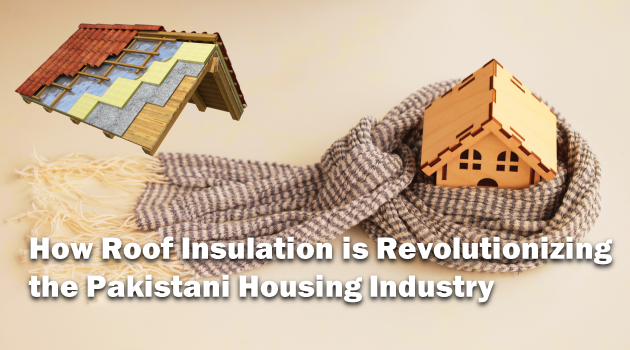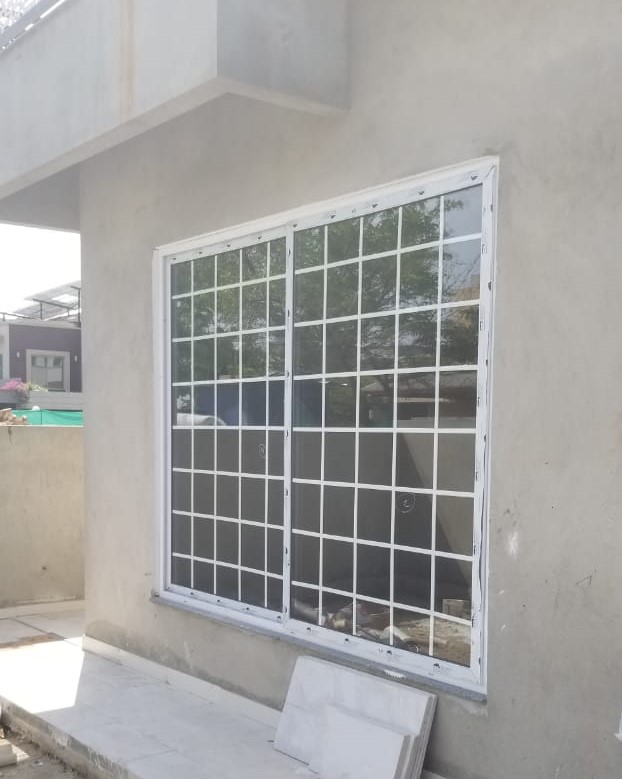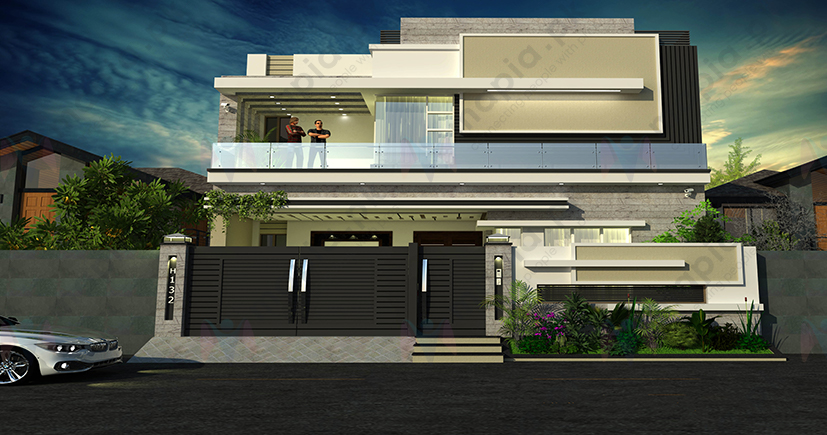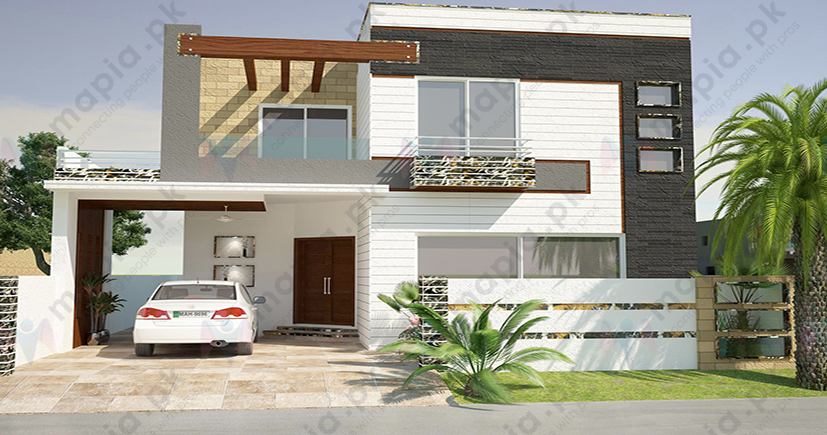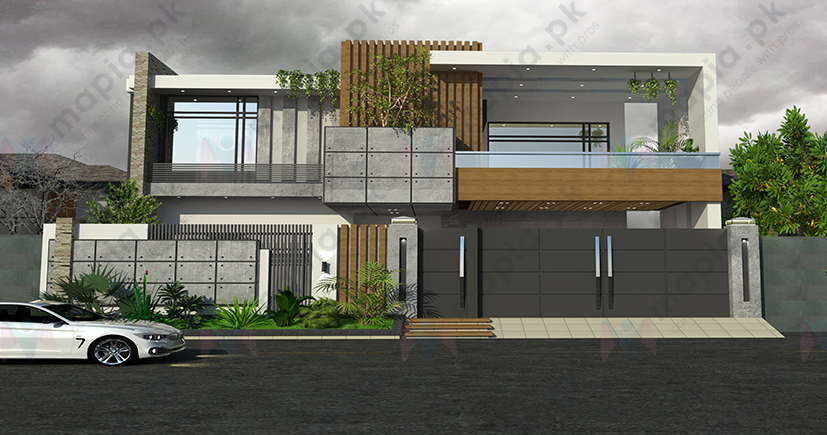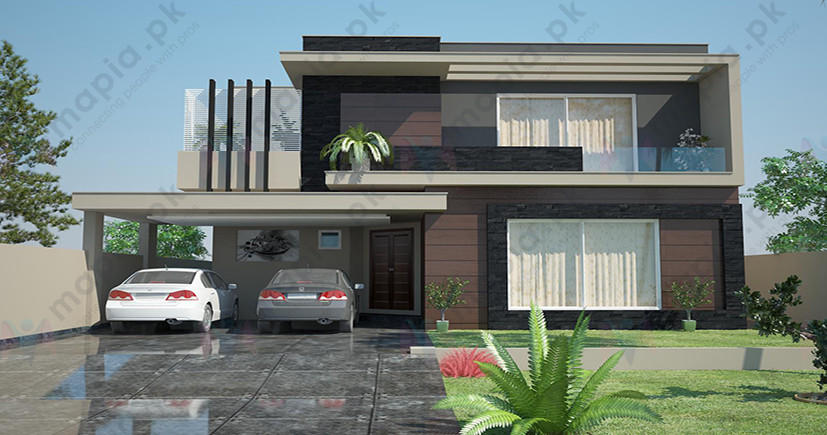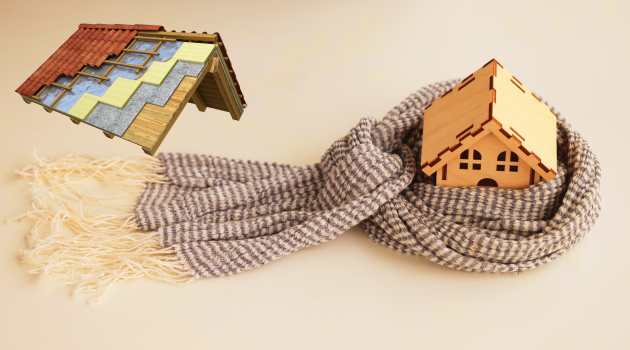
How Roof Insulation is Revolutionizing the Pakistani Housing Industry
Pakistan's climate is characterized by high temperatures in the summer and cold winters. As a result, many homeowners experience significant energy losses due to inadequate insulation. Roof insulation, however, is a game-changer for the Pakistani housing industry, as it offers numerous benefits, including reduced energy bills and a more comfortable living space. In this blog post, we'll explore how roof insulation is revolutionizing the way Pakistanis think about home insulation.
What is Roof Insulation?
Roof insulation refers to the process of adding insulation material to the roof of a building to prevent heat transfer from the inside of the building to the outside, and vice versa. This insulation material can be applied to the attic, crawl space, or roof deck, depending on the type of roof and insulation material used.
Purpose of Roof Insulation
The main purpose of roof insulation is to reduce heat loss or gain through the roof, which can help regulate the temperature inside the building. This is particularly important in countries like Pakistan where temperatures can soar during the summer months and drop significantly during the winter. By preventing heat transfer through the roof, homeowners can reduce their energy bills and create a more comfortable living space.
• Roof insulation reduces energy bills by preventing heat loss in the winter and heat gain in the summer.
• Insulated roofs help to maintain a more comfortable indoor temperature, reducing the need for air conditioning and heating.
• Roof insulation also has environmental benefits, reducing greenhouse gas emissions and energy consumption.
• Different types of insulation materials have varying R-values, which indicate their insulating properties.
• Installation difficulty varies depending on the insulation material and roof type.
Why is Roof Insulation Important?
Energy Savings
Roof insulation can significantly reduce energy consumption in buildings by preventing heat transfer through the roof. This is particularly important in countries like Pakistan where temperatures can be extreme, leading to high energy bills due to the use of air conditioning and heating systems. By insulating the roof, homeowners can reduce the need for these systems, thereby reducing energy bills.
Comfort
Roof insulation can also improve the overall comfort of a building by helping to maintain a more consistent indoor temperature. This is because the insulation material helps to prevent heat from escaping during the winter and entering during the summer, keeping the temperature inside the building more stable. This can lead to a more comfortable living space, particularly in extreme weather conditions.
Environmental Impact
Roof insulation also has a positive impact on the environment. By reducing energy consumption, it helps to reduce greenhouse gas emissions, which are a major contributor to climate change. Additionally, by reducing the need for air conditioning and heating systems, roof insulation can also help conserve natural resources like oil and gas.
Soundproofing
Roof insulation can also help to reduce noise levels inside a building by absorbing sound waves. This can be particularly beneficial for buildings located in noisy areas or for those who want to reduce noise levels between floors.
There are few more writings on topics like,
How to Hire an Architect in Pakistan
Building a Sweet Home: 15 Tips for Designing a New House
What is Construction Management: A Guide to Key Concepts and Techniques
The Benefits of Roof Insulation
Roof insulation offers a number of benefits to homeowners, including:
Reduced Energy Bills
One of the primary benefits of roof insulation is that it can significantly reduce energy bills. Insulation helps to keep the home warm in the winter and cool in the summer, reducing the need for heating and air conditioning. This can result in substantial savings on energy bills over time.
Increased Comfort
Insulation also helps to make the home more comfortable by regulating the temperature and reducing drafts. This can make the home more pleasant to live in and can help to reduce the incidence of colds and other respiratory illnesses.
Improved Indoor Air Quality
Roof insulation can also improve indoor air quality by reducing the amount of air infiltration from the outside. This can help to reduce the amount of pollen, dust, and other allergens that enter the home, making it a healthier environment for those with allergies or asthma.
Noise Reduction
Insulation can also help to reduce outside noise, making the home quieter and more peaceful. This can be particularly beneficial for those who live near busy roads or other noisy environments.
Increased Home Value
Finally, roof insulation can increase the value of the home by making it more energy-efficient and environmentally friendly. This can be a major selling point for potential buyers and can help to increase the resale value of the home.
Types of Roof Insulation Materials
There are several types of insulation materials that can be used to insulate roofs. Each material has its own advantages and disadvantages, and homeowners should choose the material that best suits their needs and budget. Some of the most common types of roof insulation materials include:
Batt Insulation
Batt insulation is a type of insulation that consists of fiberglass or mineral wool batts that are fitted between the joists or rafters of a roof. It is a relatively inexpensive insulation option that is easy to install and has a high R-value, which indicates its insulating properties. However, it may not be the best option for buildings with irregularly shaped roofs, as it can be difficult to install in these spaces.
Blown-In Insulation
Blown-in insulation is a type of insulation that consists of loose insulation material that is blown into the roof space using special equipment. It is a good option for buildings with irregularly shaped roofs, as it can be blown into any space, providing complete coverage. It is also a good option for those who want to add insulation to an existing roof, as it can be installed without removing the existing roof covering.
Spray Foam Insulation
Spray foam insulation is a type of insulation that is sprayed onto the roof deck and expands to fill any gaps or crevices. It provides excellent insulation and is particularly effective at reducing air infiltration, which can be a major source of heat loss or gain. However, it is more expensive than other types of insulation and may not be suitable for all types of roofs.
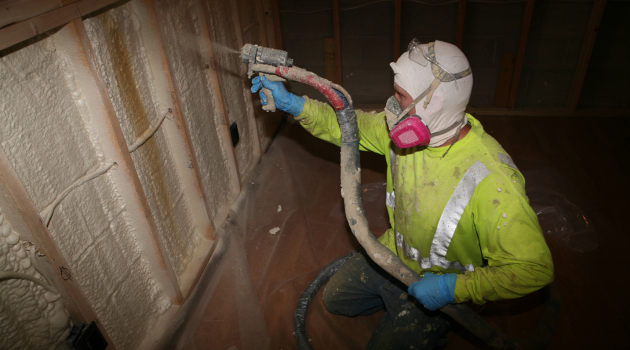
Radiant Barrier Insulation
Radiant barrier insulation is a type of insulation that reflects heat away from the roof, rather than absorbing it. It is particularly effective at reducing heat gain during the summer months, making it a good option for buildings located in areas with high temperatures. However, it may not be as effective at reducing heat loss during the winter months.
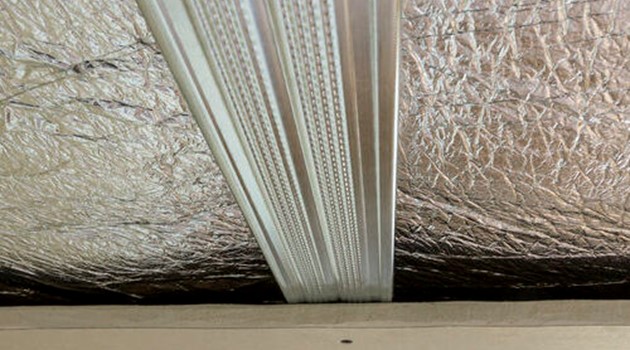
Fiberglass Insulation
Fiberglass insulation is one of the most common types of insulation used for roofs. It is made from spun glass fibers that are woven into a mat, and is available in both batt and blown-in form. Fiberglass insulation is relatively inexpensive, easy to install, and has a high R-value. However, it can be itchy and irritating to the skin and lungs if not handled properly during installation.
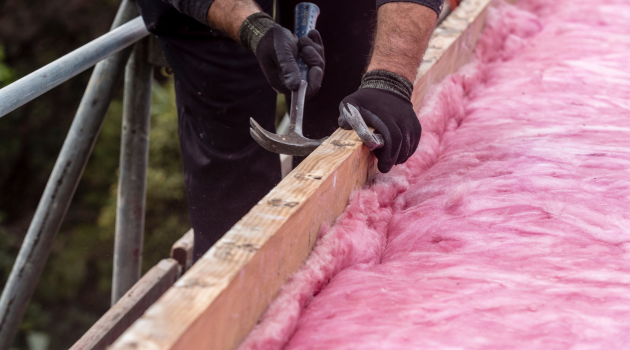
Cellulose Insulation
Cellulose insulation is made from recycled paper and other natural materials. It is available in both blown-in and loose-fill form and has a high R-value. Cellulose insulation is a good choice for those looking for an environmentally friendly option, as it is made from recycled materials. However, it can be more expensive than other types of insulation.
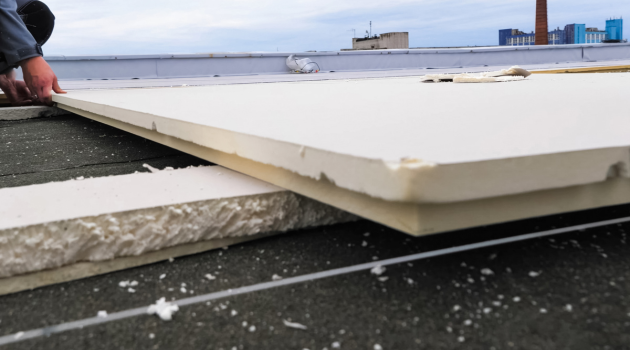
Reflective Insulation
Reflective insulation is a type of insulation that is made from reflective materials, such as aluminum foil. It is designed to reflect heat and is often used in warm climates to keep homes cool. Reflective insulation is a good choice for those looking for an affordable option, as it is relatively inexpensive compared to other types of insulation. However, it may not be as effective in cooler climates.

Rigid Foam Insulation
Rigid foam insulation is a type of insulation that is made from foam boards. It is available in both expanded and extruded form and has a high R-value. Rigid foam insulation is a good choice for those looking for a durable and long-lasting option, as it is resistant to moisture and does not sag or settle over time. However, it can be more expensive than other types of insulation.
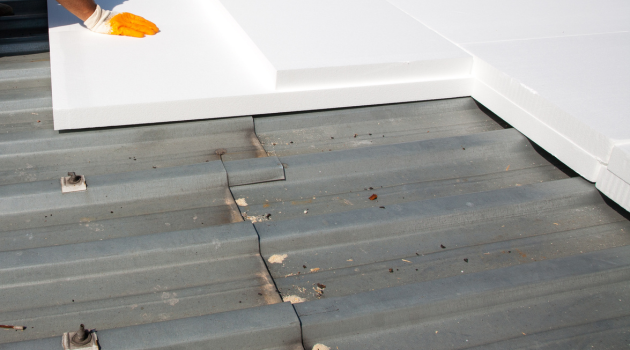
How to Choose the Right Insulation Material
Choosing the right insulation material for your roof is an important decision that can have a significant impact on the comfort and energy efficiency of your home. Here are some factors to consider when choosing the right insulation material:
R-Value
The R-value is a measure of the insulation's resistance to heat flow. The higher the R-value, the better the insulation's thermal performance. Homeowners should choose an insulation material with a high R-value to ensure maximum energy efficiency.
Material
As discussed earlier, there are several types of insulation materials available, each with its own advantages and disadvantages. Homeowners should consider factors such as cost, environmental impact, and ease of installation when choosing the right material for their needs.
Moisture Resistance
Moisture can be a major issue in some climates, and homeowners should choose an insulation material that is resistant to moisture to prevent mold and other moisture-related problems.
Fire Resistance
Fire resistance is another important factor to consider when choosing insulation materials. Homeowners should choose materials that are fire-resistant to ensure maximum safety.
Ease of Installation
The ease of installation is another important factor to consider when choosing insulation materials. Homeowners should choose materials that are easy to install or hire a professional insulation contractor to ensure proper installation.
Roof Insulation Installation Process
Installing roof insulation can be a complex process that requires careful planning and execution. Here are the steps involved in the roof insulation installation process:
Preparation
Before starting the installation process, the installer will need to prepare the roof by ensuring that it is clean and free from any debris. The installer will also need to ensure that any existing insulation is removed and any gaps or holes in the roof are sealed.
Material Selection
Once the roof is prepared, the installer will need to select the appropriate insulation material based on the factors discussed earlier, such as R-value, material, and moisture resistance.
Installation
The installer will then begin the installation process by laying the insulation material on the roof and securing it in place. The insulation may be installed in rolls or in individual pieces, depending on the type of material used.
Sealing
Once the insulation is in place, the installer will need to ensure that all gaps and joints are sealed to prevent air leakage. This is an important step in ensuring maximum energy efficiency.
Ventilation
Finally, the installer will need to ensure that the roof is properly ventilated to prevent moisture buildup and reduce the risk of mold and other moisture-related problems.
Frequently Asked Questions
Q: Will installing roof insulation reduce my energy bills?
A: Yes, roof insulation can significantly reduce energy bills by preventing heat loss in the winter and heat gain in the summer.
Q: Is roof insulation difficult to install?
A: The difficulty of installation depends on the insulation material and the type of roof. A professional insulation contractor can help you choose the best material and install it correctly.
Q: What are the environmental benefits of roof insulation?
A: Insulated roofs help reduce energy consumption and greenhouse gas emissions, which are both harmful to the environment.
Q: How much does roof insulation cost in Pakistan?
A: The cost of roof insulation in Pakistan will depend on a number of factors, including the type of insulation material used, the size of the roof, and the complexity of the installation. Generally, the cost ranges from Rs. 100 to Rs. 300 per square foot.
Q: What is the best type of insulation material for roofs?
A: The best type of insulation material for roofs will depend on a number of factors, including the type of roof, the climate, and the budget. Some of the most common types of insulation material used for roofs include fiberglass, rigid foam, and spray foam.
Q: Can roof insulation be installed on an existing roof?
A: Yes, roof insulation can be installed on an existing roof. Blown-in insulation is a good option for those who want to add insulation to an existing roof, as it can be installed without removing the existing roof covering.
Roof insulation is changing the way Pakistanis think about home insulation. It offers numerous benefits, including energy savings, improved comfort, and environmental benefits. By choosing the right insulation material and hiring a professional contractor, homeowners can enjoy all the benefits of roof insulation while ensuring that the insulation is installed correctly. So, if you're a homeowner in Pakistan, consider adding roof insulation to your home to reduce energy bills and create a more comfortable living space.


